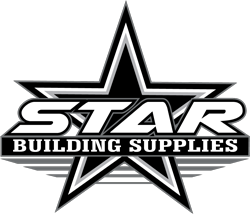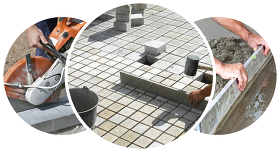Brush structures are created totally from plant parts and were used in unrefined social orders, for instance, Native Americans and Building Supplies Online social classes in Africa These are developed generally with branches, twigs and leaves, and bark, similar to a beaver’s lodge. These were distinctively named wickiups, covers, and so on
An extension on the brush building thought is the wattle and wipe measure in which earth soils or compost, for the most part, cow, are used to fill in and cover a woven brush structure. This gives the development all the more warm mass and strength. Wattle and wipe are some of the most settled design techniques. Various more prepared wood diagram structures meld wattle and smear as non-weight-bearing dividers between the timber traces.
Ice and snow
Snow and now and again ice were used by the Inuit social classes for igloos and snow is used to gather an asylum called a quinzhee. Ice has also been used for ice motels as a place for getting away in northern conditions.
Mud and sand
Mud-based designs generally come in two specific sorts. One is where the dividers are made directly with the mud mix, and the other being dividers worked by stacking air-dried construction blocks called mud blocks.
Various vocations of mud in buildings are gotten together with straws to make light soil, wattle and smear, and mud mortar.
Wet-laid mud dividers :
Wet-laid, or damp, dividers are made by using the mud or soil mix clearly without molding squares and drying them first. The proportion of and kind of each material in the mix used prompts different styles of constructions. The fundamental thought is ordinarily connected with the idea of the soil being used. Greater proportions of soil are for the most part used in working with cob, while low-mud soil is ordinarily associated with grass house or turf roof improvement. The other standard trimmings fuse essentially sand/rock and straw/grasses. Pummeled earth is both an old and fresher understanding of making dividers, once made by compacting soil soils between sheets physically; nowadays structures and mechanical pneumatic blowers are used.
Soil, and especially soil, gives extraordinary warm mass; it is genuinely skilled at keeping temperatures at a reliable level. Homes worked with earth will overall be regularly cool in the mid-year heat and warm in a crisp environment. Mud holds warmth or crisp, conveying it all through some unclear time span like stone. Earthen dividers change temperature bit by bit, so erroneously raising or cutting down the temperature can use a more noteworthy number of resources than in say a wood collected house, yet the glow/coolness stays longer.

Fundamental soil squares and squares :
Mud-blocks, moreover known by their Spanish name adobe, are old construction materials with confirmation returning centuries BC. Pressed earth blocks are a more present-day kind of square used for building even more routinely in industrialized society since the design squares can be made off-site in a united region at brickworks and moved to various construction regions. These squares can moreover be adjusted even more successfully and sold.
Hidden mud blocks are regularly made using soil, as often as possible earth soil and folio are the solitary trimmings used, but various trimmings can join sand, lime, concrete, stone and various covers. The outlined or stuffed square is then air-dried and can be laid dry or with a mortar or earth slip.
